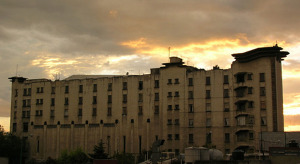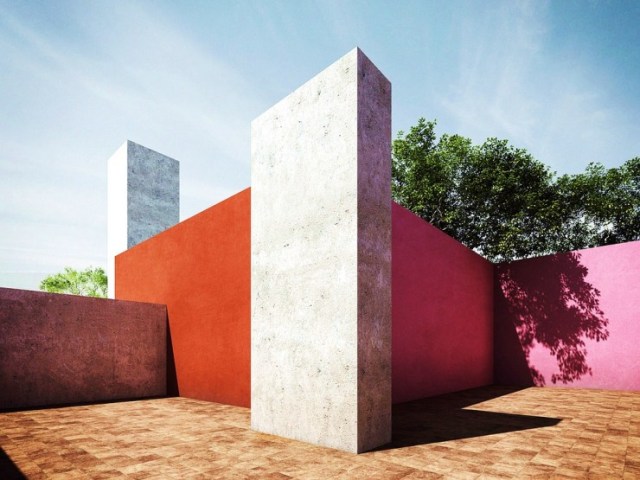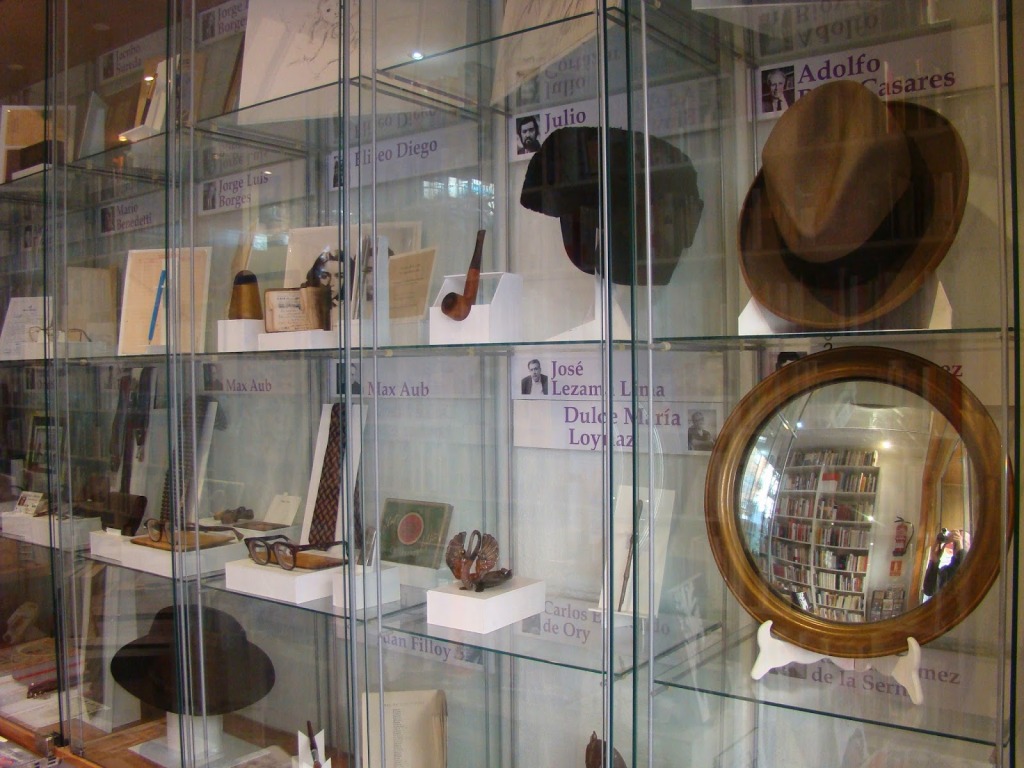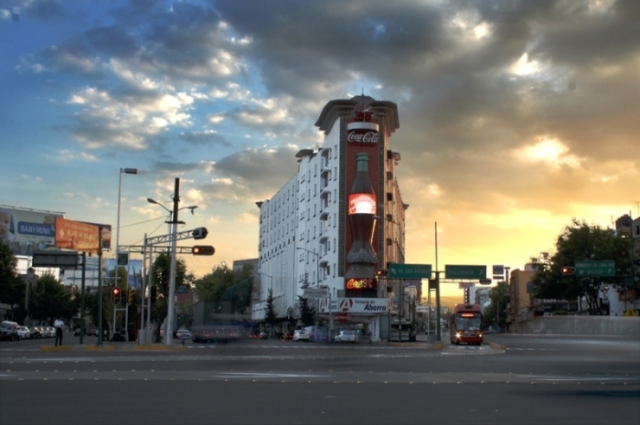Tacubaya is guaranteed to pique your interest. It was born as a town; an ancient settlement that gradually adhered to the urban sprawl. Today, its epicenter carries the most traditional aspects of the region, which was inhabited since pre-Columbian times, and due to its high location, in comparison to the now extinct Texcoco Lake, it was shelter and vantage point for the Spanish elite during colonial times. The first skyscraper was built here in the 1930s, the art decó “Ermita” or “Tacuba Triangle” was a symbol of luxury and one which contrasted among the surrounding slums.
(Neighborhood map courtesy of Eldefe.com)
Although Tacubaya has a rich history, there is a peculiar historical period that has marked it as a symbol of rebellion. In the 1980s a cumulus of “gang kids” emerged in the area, they were the first organized street gangs with a clearly marked identity that followed global trends. These were the first sprouts of global subculture in Mexico; punk bands, in particular, were born from the underground and rebelled against authority. In this way, the first subcultures of the neighborhood multiplied with strength, so much so that at some point the area was known as “no-man’s land”.
The neighborhood has also played a notable role in film; it has been the stage for legendary movies since the golden era of Mexican cinema. It has been portrayed in works such as Luis Buñuel’s Los Olvidados, and more recently, in Amores perros and Perfume de Violetas.
Today, Colonia Tacubaya spans what was practically the town’s epicenter. However, the area known by the same name also encompasses other neighborhoods, such as the second section of San Miguel Chapultepec and some parts of Observatorio and Escandón districts. Below are some of the most emblematic places in the neighborhood and the entire Tacubaya area:
Panteón Civil de Dolores
Among the largest cemeteries, and also the city’s most ancient one. It is located in the 3rd section of Chapultepec Park and was founded in 1857. Among its main attractions are the Illustrious People Roundabout that holds the remains of 104 and prominent characters, David Alfaro Siqueiros among them. You’ll find beautiful and interesting mortuary architecture here, which ranged from styles pertaining to the end of the 19th century, as well as elegant marble tombstones from the 20th century and more avant-garde designs made of steel.
Address: Constituyentes, del. Miguel Hidalgo
This architect’s rustic minimalism has become highlighted with this museum, hosted in his former intimate home. The composition of each of the rooms in this building resembles an abstract painting infused with Mexican style. This is the type of place you have to visit at least once in your lifetime.
Address: General Francisco Ramírez, col. Daniel Garza
Museo del Escritor (The Writer’s Museum)
You’ll find personal objects formerly owned by important writers such as Octavio Paz or Carlos Fuentes in this museum; you’ll also find an archive dedicated to Edgar Allan Poe and even some authentic first editions of his books. It’s a fairly unknown museum, but it is perhaps one of the most intimate approaches to legendary Mexican writers.
Museo Nacional de Cartografía (National Cartography Museum)
This museum is located in an ancient convent built in 1686 and it is possibly the most important map archive in the country. You can explore the authentic collection of New Spain’s first maps, ancient codex, telescopes, compasses, ancient and current maps, aerial photographs, models and antique measuring machines. A very special place, a miniature underworld in mankind’s millenary search to understand and represent space.
Address: Av. Observatorio 94, col. Tacubaya
Ermita Building
This beautiful art déco piece built on a corner and acquiring its triangular shape is considered one of last century’s finest architectural jewels. Erected in 1930, at the time it was the city’s tallest, most luxurious, avant-garde building. Today it is maintained in a good state and to see it is to be struck by the air that the city breathed at the time; an example of an era’s sophistication.
Revolución 23, col. Tacubaya
Santa Fe is one of those “new, new, new” areas in the west of Mexico City. So new that lots of Mexico City residents have never been there, and many of them will never go. But Santa Fe is, like all of Mexico City, loaded with history and curious facts that make it always worth looking into a little deeper.
During the long colonial period, the area was devoted to grazing animals and mining the relatively poor soil. The regions was divided into the towns of Santa Fe, Santa Lucia, San Mateo and San Pedro Tlaltenango Cuajimalpa. The villages were intersected by the Royal Road, New Spain’s first toll road that ran all the way to Toluca (and still does). Today it’s still known as the Vasco de Quiroga highway and the toll booth is still located in the nearby Contadero neighborhood.
Named in honor of the first bishop of Michoacan’s “Hospital of Santa Fe,” Vasco de Quiroga was that famous friar who taught different skills to the various peoples of Michoacan. He also started numerous hospitals that provided not only for the sick but for pilgrims and travelers.

Upon arriving in New Spain, Vasco de Quiroga took a look at the sorrowful state of things and got to work. Sent as a sort of a judge of the “Second Audiencia of Mexico,” which ruled from 1530 – 1534, he ended up founding both the Hospital and the Pueblo Santa Fe with his own money. Vasco de Quiroga’s believed primarily that charity would be the only way he could really make a difference. His attempt to redeem the fallen landscape led him to undertake no less than the founding of Thomas More’s Utopia, right here on Earth.
Within a few years, the hospital was itself called Pueblo Santa Fe, literally the “people of Santa Fe.” And after 1532, the project essentially took on a life of its own and began to expand to other congregations and to form similar hospitals and social charity projects wherever it went. Quiroga maintained control over nearly all of them and enforced a set of rules he’d written down himself.

Some of the rules still carry Quiroga’s idea of exactly how this was to translate into a Utopia on Earth. According to notes in the collection of the Institute of Historical Research of the University of Michoacan, “Parents should ensure the marriages of their children with daughters from other families in the same Pueblo-Hospital. Failing that the daughters of the poor from the same neighborhood could also be married.” Men were considered marriageable at fourteen, and women at twelve. In the extended family, all members were required to obey the eldest grandfather. Wives were to obey husbands, and children were to serve and obey parents, grandparents and great-grandparents. Any need for servants from outside the family was to be avoided.
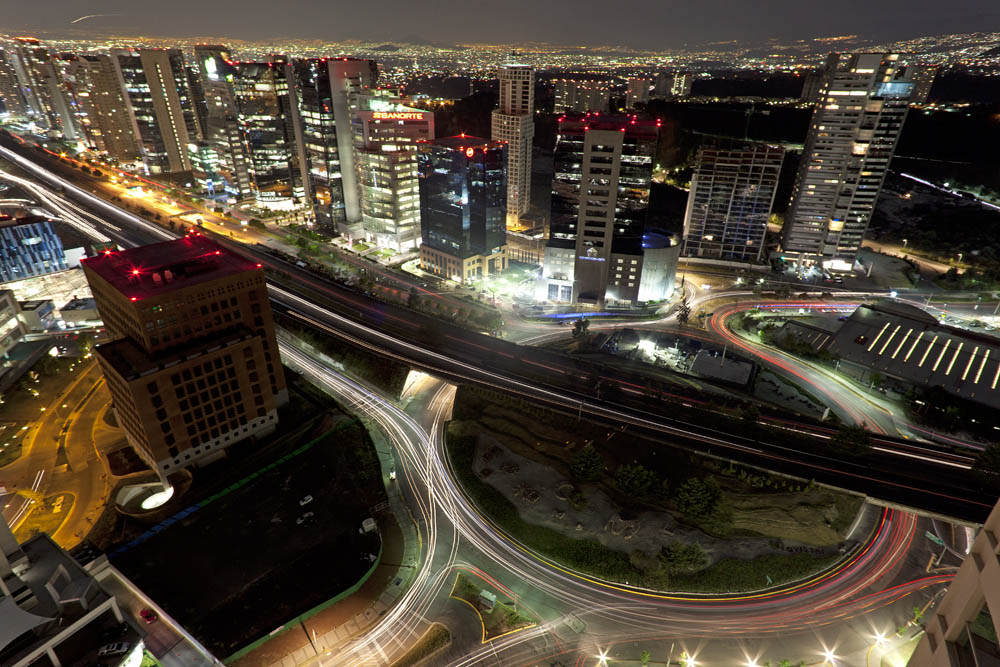
Santa Fe is said to be the remnant of that famous Utopian village. The ostentatious city of today grew up from the ashes of that early attempt at a perfect society. And though many Chilangos will still find it hard to believe, something of that hope and vision is likely still evident in the towers and underpasses that stand there today.
